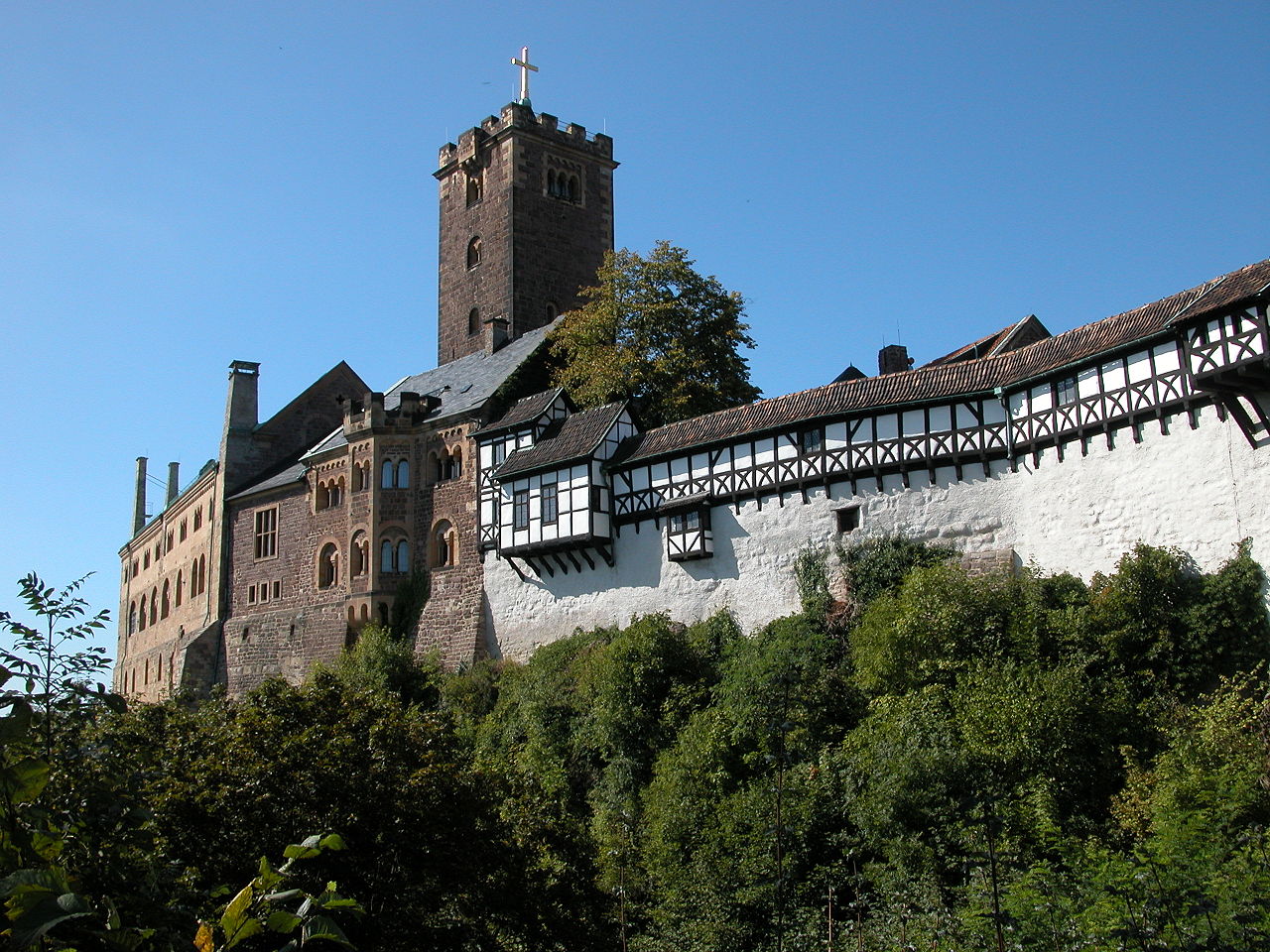
Geographic Location: Western Thuringia, Middle Germany
The Reformation, one of the most significant religious and political movements in Europe in the last thousand years, began on 31 October 1517 in Wittenberg.
Martin Luther, who first arrived there in September 1508, nailed his 95 theses to the town church and fundamentally altered the course of western history.
500 years later, Wittenberg is the focal point for a decade of celebrations designed to bring the Reformation and its legacy to life at original venues across the town.
A wide-ranging calendar of events – from those rooted in religion and the Reformation to more conventional affairs such as fun-packed public festivals – put the spotlight on Wittenberg and its history.
Wartburg Castle in Eisenach also has a big part to play in the anniversary celebrations. Legend has it that Ludwig the Leaper founded the castle in 1067.
For over 200 years, its fortunes were closely aligned with those of the influential Ludowingian dynasty who ruled over Thuringia in central Germany.
The power and influence wielded by the counts grew rapidly thanks to their chess-like political maneuvering, appropriation of land and tactical marriages.
They received a further boost when their state became a landgraviate under the Holy Roman Empire. From May 1521 to March 1522, Martin Luther – who had been exiled by the Emperor and excommunicated by the Pope – stayed at the Bailiff‘s lodge of Wartburg Castle under the name „Squire George“.
Throughout his detention, which was for his own safety, he lived and worked in a sparsely decorated room, which is now referred to as the Lutherstube.
Here, in just ten weeks, Luther translated the New Testament of the Bible into German from the original Greek text. The Lutherstube, which is the last stop on the museum tour of Wartburg Castle, still makes visitors feel they have been transported back to Reformation times.
For centuries, it has been a magnet for pilgrims and is considered the birthplace of the written German language. In December 1999, Wartburg Castle was added to the World Cultural Heritage list.
UNESCO World Heritage Site
http://whc.unesco.org/en/list/897
Address Wartburg
Auf der Wartburg 1
99817 Eisenach
Germany
Website:
Image source:
Wikimedia
The image file is licensed under the Creative Commons Attribution-Share Alike 2.0 Generic license.
This image was originally posted to Flickr by Robert Scarth at https://www.flickr.com/photos/18222776@N00/241708183. It was reviewed on by FlickreviewR and was confirmed to be licensed under the terms of the cc-by-sa-2.0.

